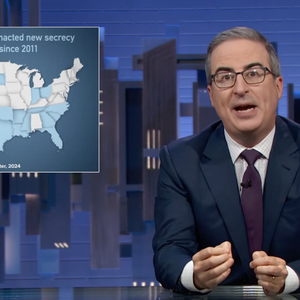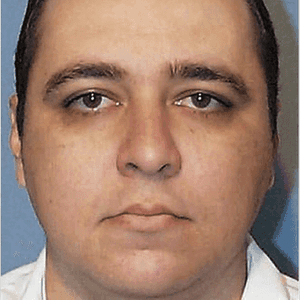
Robert Melson (pictured), an Alabama death-row prisoner whose clemency petition alleges that abandonment by his post-conviction lawyers prevented him from adequately challenging the flawed forensic evidence in his case, received a stay of execution from the U.S. Court of Appeals for the 11th Circuit on a challenge to Alabama’s lethal-injection protocol. Melson was convicted of three murders at a Popeye’s restaurant in 1994. A survivor of the crime recognized one of two assailants as Cuhuatemoc “Tempo” Peraita, an acquaintance of Melson’s, and described the second assailant only as a black man. More than an hour after the crime occurred, police pulled over Peraita’s car, and arrested him along with the black male passenger, Robert Melson. At the suggestion of police, Peraita—a 17-year-old with intellectual impairments—confessed to having been present during the crime, but claimed Melson had shot the victims. (Peraita has since recanted his accusation.) Melson has consistently maintained his innocence. During the interrogation, police took Melson’s shoes from him. According to Melson’s clemency petition, “Five days later, a police evidence technician belatedly discovered, photographed, and cast footprints in a rainy drainage ditch behind Popeye’s restaurant, which they later said matched Mr. Melson’s shoes.” Peraita didn’t testify at Melson’s trial, and the witness who had identified Peraita did not identify Melson in a photo lineup. No other forensic evidence—such as fingerprints or DNA—linked Melson to the crime. As a result, Melson’s conviction relied heavily on the shoeprint evidence, a type of evidence that the landmark 2009 report on forensic science by the National Academies of Science, Strengthening Forensic Science in the United States: A Path Forward, found to be unreliable, unscientific, and susceptible to bias. In addition to the problems inherent with shoeprint evidence, nearly two inches of rain had fallen between the time of the crime and the time police reported discovering the shoeprint. Melson should have been able to challenge the shoeprint evidence during his post-conviction appeal, but was represented by an inexperienced volunteer attorney who was not licensed in Alabama and a local attorney who had a history of malpractice. The lawyers did not properly file Melson’s state post-conviction petition, and then, on appeal, they filed the documents in the wrong court, causing his appeal to be dismissed. The error was compounded because the attorneys failed to inform Melson of the dismissal. Melson’s time to file a petition for habeas corpus in federal court ran out before he learned his state case had been dismissed. Cases like Melson’s raise concerns about Alabama’s recently passed “Fair Justice Act,” which would potentially exacerbate errors like those made by his attorneys, since state deadlines would be shorter and stricter and all state death penalty appeals would run concurrently. In a separate case, Melson and several other Alabama death-row prisoners challenged Alabama’s use of midazolam in executions, highlighting problems that have occurred when the drug was used in past executions. The 11th Circuit stayed Melson’s June 8 execution to allow time for it to consider that challenge. [UPDATE: The U.S. Supreme Court vacated the stay of execution, and Melson was executed as scheduled.]
(H. Koplowitz, “Alabama death row inmate Robert Melson granted stay of execution by federal appeals court,” AL.com, June 2, 2017; K. Chandler, “Court stays Alabama execution to decide on use of drug,” Associated Press, June 2, 2017; B. Lyman, “Melson case revives old questions about Alabama execution methods,” Montgomery Advertiser, June 4, 2017.) Read Melson’s clemency petition and the 11th Circuit’s stay order. See Arbitrariness and Lethal Injection.




